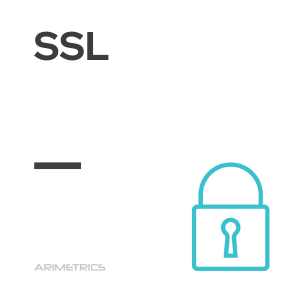Definición: SSL, que significa Security Socket Layer (en español, capa de puertos seguros), es una tecnología utilizada para asegurar las conexiones a Internet y proteger la información confidencial transmitida entre dos sistemas. Estos sistemas pueden ser un servidor y un cliente (como una página web de compras y un navegador) o entre servidores (por ejemplo, en aplicaciones bancarias que manejan datos sensibles). El objetivo principal de SSL es evitar que terceros no autorizados puedan acceder o modificar los datos transferidos.
How do you know if a website has an SSL certificate?
It is essential to recognize whether a website is protected by an SSL certificate to ensure the security of the information transmitted. Modern browsers facilitate this identification by means of visual indicators. Web pages that use the SSL security protocol are identified by a padlock icon in the browser’s address bar. This symbol indicates that the connection is secure and that the data is encrypted.
How to obtain an SSL certificate
Obtaining an SSL certificate involves following a structured process that ensures the authenticity and security of the website. The steps required to acquire and deploy an SSL certificate are described below.
- Purchasing the certificate: It is necessary to purchase the SSL certificate from a reliable provider. There are many authorized providers, such as DigiCert, Let’s Encrypt and others.
- CSR Generation: Each certificate requires a Certificate Signing Request (CSR). This is a file containing information about the domain and the organization, necessary to request the certificate.
- Verification: After generating the CSR, the application must be verified. This can be done through a verification email or by placing a verification file on the website.
- Receipt and installation: Once the request has been verified, the SSL certificate will be emailed or made available for download directly from the provider’s website. It must then be installed on the server to activate the secure connection.
Benefits of using SSL
Implementing SSL on a Web site offers multiple benefits beyond simple data protection. These benefits range from security to improved user confidence and site performance.
- Data encryption: SSL encrypts the information transmitted between the browser and the server, protecting sensitive data from unauthorized access.
- Authentication: Ensures that users are communicating with the correct server and not an impostor, which helps prevent phishing attacks.
- Data integrity: Ensures that data is not altered during transmission, guaranteeing that the information arrives complete and unaltered.
- User trust: The presence of an SSL certificate increases user confidence in a website, which can improve brand awareness and increase conversion rates.
- SEO factor: Search engines, such as Google, consider the use of SSL as a positive SEO factor, favoring secure websites in search results.
Differences between SSL and TLS
Although SSL and TLS are often used interchangeably, there are key differences between these protocols that are important to understand for effective online security implementation.
- Technological evolution: TLS (Transport Layer Security) is the successor to SSL and offers improvements in security and efficiency. Although they are often used interchangeably, TLS is the most modern and secure version.
- Compatibility: TLS is backward compatible with older versions of SSL, allowing older systems using SSL to continue to work with servers using TLS.
- Security enhancements: TLS includes stronger encryption algorithms and stronger authentication mechanisms, offering superior protection against known SSL vulnerabilities.
- Current use: Most secure connections today use TLS, although the term SSL is still commonly used to refer to encryption technology in general.


